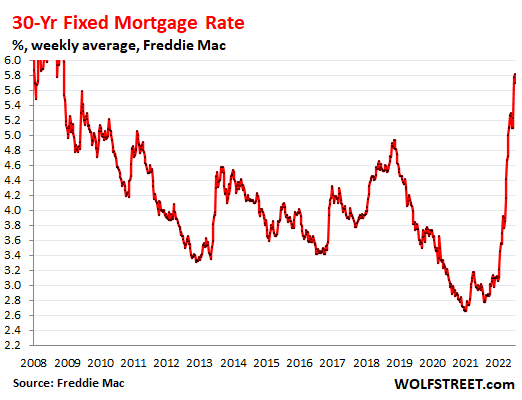As Valley faces water shortage, city leaders look for new potential … – Fronteras: The Changing America Desk

The Phoenix area has been one of the fastest growing metros in the country for years, with people and businesses moving here and developments sprouting up Valley wide. But, at the same time, the region is facing a water shortage, as Colorado River supplies decline, and leaders look for new potential sources. Those two issues would not seem to go together well. So how do leaders allow for growth, while making sure there’s enough water to meet increased demand?
Sarah Porter is the director of the Kyl Center for Water Policy at Arizona State University’s Morrison Institute for Public Policy.
“For years and years, I think there hasn’t been a lot of thinking, in terms of what is the return per million gallons of water or per gallon of water,” Porter said.
That return she’s talking about is jobs — specifically well-paying jobs — and how many of them a project will deliver for the amount of water it’ll use. Cities think about this differently — it’s why some may prioritize golf courses and other tourism-related industries while others seek out high-tech manufacturing plants, for example.
Porter expects more of that kind of thinking in the future, though, as communities look more carefully at their water portfolios.
“Looking at the return, in terms of well-paying jobs per gallon, you can see why a semiconductor plant looks desirable for a community. It is why a community might decide that it’s worth committing a chunk of their water portfolio to a semiconductor fabrication plant,” Porter said.
That’s the approach Chandler has taken. The city’s Economic Development Director Micah Miranda says the strategy is to closely align economic development goals with the city’s water resources.
For his city, that means projects involving advanced manufacturing — think Intel; and health care, including pharmaceutical manufacturing are more likely to get access to Chandler’s water supplies than those in other industries. Miranda says attracting economic development while keeping water resources in mind is the number one conversation his department has.
“We do have those honest and up-front conversations with users, high-water users that don’t align with our economic development goals and community goals. And we just have to be up front and say, ‘Hey, what you’re looking to do doesn’t fit within the city of Chandler or our water resource capacity.’ So, we’ll just take a pass on those projects,” Miranda said.
But those projects that Chandler says “no thanks” to could find a home in a different Valley city, with a different economic development plan.
Suzie Boyles is Buckeye’s Economic Development director.
“And so while we may not take the high water users, that doesn’t mean that there aren’t a plethora of other industry that is looking to locate in AZ that brings high quality jobs, that brings that employment to our local community that we can entertain,” Boyles said.
She points out her city is the state’s biggest by land area and is less than 20% built out. Boyles predicts Buckeye will be growing for the next hundred years, so the city prioritizes water to make sure that can happen.
“So the decisions we’re making today with respect to the types of industries we’re attracting will either help or hinder us in the long run. And so, we can be very successful and bring in jobs to meet the needs of our community without trading off that water demand that we will need as the community continues to grow,” Boyles said.
Boyles says Buckeye tends to focus on attracting industries like advanced manufacturing, logistics and energy companies. The city, though, is now dealing with the news of a recently-released report from the state Department of Water Resources; it shows an area of the West Valley including Buckeye is short of the required 100-year assured water supply to build new homes.
In a statement, the city says it’s reviewing the nearly 300 page document, but that every home or business currently developed in Buckeye has a 100-year assured water supply. It goes on to say “Buckeye’s water future is secure – it is not in danger, and it currently has the resources to sustain our existing customers and projected growth that already have certificates of assured water supply.”
Tony Lydon is part of the industrial logistics supply team at commercial real estate firm JLL in Phoenix.
“The water adds a level of complexity that you simply just don’t have on many of the pursuits where water is really just a domestic need,” Lydons aid.
He says most of the companies with whom he works have relatively small water needs — ecommerce, logistics and distribution type operators. But, that’s not always the case. And, he has had a city say, essentially, “sorry, no, you use too much water to locate here.”
“I had a project with a global, iconic bottler. And we actually opened escrow on the site. And at the end of the day, our water consumption was just too great for that particular community. And so we needed to scrap that candidate site solution and go find another property,” he said.
Lydon says water may not be among the top considerations for all businesses when they’re thinking about where to locate, but for some industries, it’s the Holy Grail. And, he says most of the time, a solution can be found for a company that wants to come to the Valley.
“I don’t think Arizona would be experiencing as much success as we have over the last three to five years if we didn’t have a water solution for the vast majority of companies that want to locate here,” Lydon said.
But not everyone shares that optimism. Mark Roseland is a Professor in the School of Community Resources and Development in ASU’s Watts College of Public Service and Community Solutions. And, he says figuring out how many jobs a project may create for the amount of water it uses is a tough calculation.
“I think from the city perspective, the question is if you have a new business or development or user coming in, and you know they’re gonna have a lot of water demand and your water capacity is really limited, can you just say no to them?” Roseland said.
To Roseland, the answer to that question is, no they can’t — despite cities saying they can — and do. He doesn’t think water scarcity has to mean no development. But, he says, it does mean the development has to be done thoughtfully, and in a way that doesn’t further deplete finite supplies. In fact, Roseland thinks stopping development could actually cause more of a problem, since it means relying on existing buildings that may not be all that water efficient, where new projects can include new technology that uses less water.
“If we can say, yes there can be development, but it’s got to be literally sustainable development. It’s got to be water efficient, water sensitive development, including retrofitting existing appliances, infrastructure and so on…then we can do it in a way where new development actually improves our overall standing with respect to water,” he said.
And, Roseland says, that’s becoming more and more important — as scary projections about water scarcity in the middle of the century are starting to happen now.
Chandler’s Economic Development Director Micah Miranda is aware of that, and says it’s a conversation he has often.
“Chandler alone, when we put our water allocation policy in place in 2015, there were a lot of people that were skeptical of why we’re doing this and how it could negatively impact our economic vitality,” Miranda said.
But Miranda says over the next couple of years, as the policy became more well-known, some companies and other cities started reaching out to try to understand it. And, he says, that led to a lot more leads for prospective projects.
“If you’re going to invest millions, potentially tens or even hundreds of millions of dollars on a project, you want to make sure the community you’re investing in can serve all of your needs, and in this case specifically water needs,” Miranda said.
Miranda says Chandler tries to be thoughtful about bringing in new water users at the expense of current ones. It’s just part of a balancing act city leaders have to do — trying to make sure neither economic development opportunities nor water supplies dry up.
Support for this project comes from
KJZZ is a service of Rio Salado College, and Maricopa Community Colleges
Privacy Policy | FCC Public File | Contest Rules
Copyright © 2023 KJZZ/Rio Salado College/MCCCD






